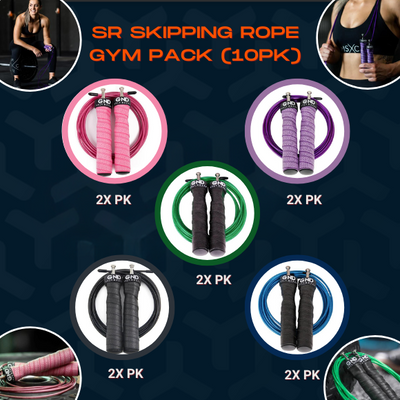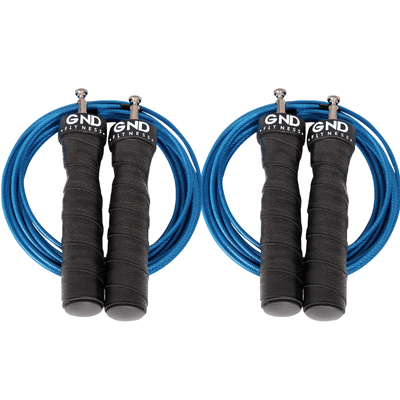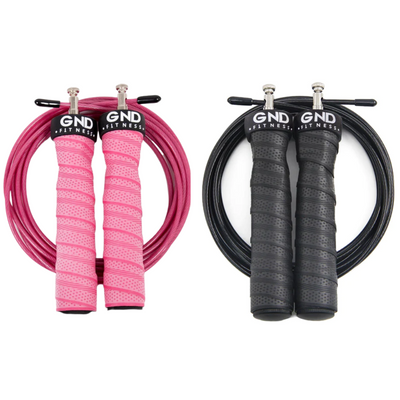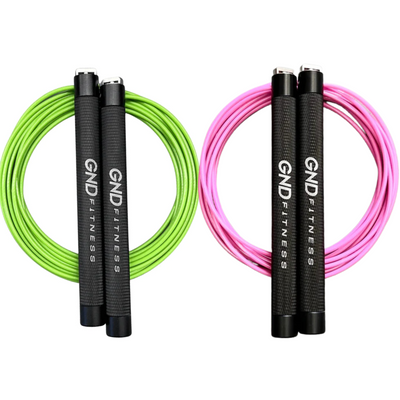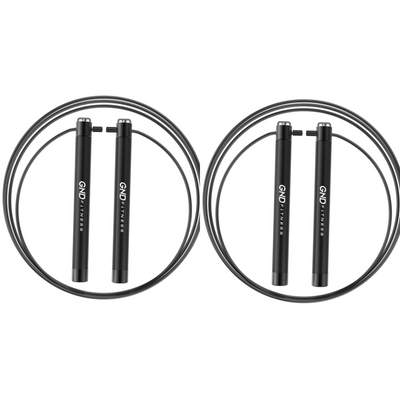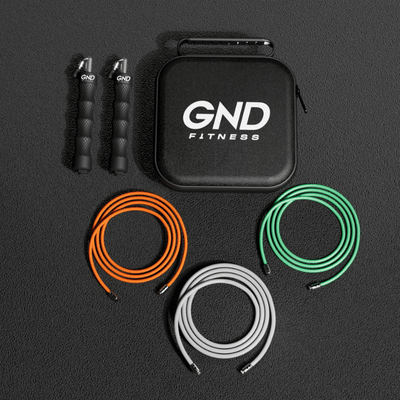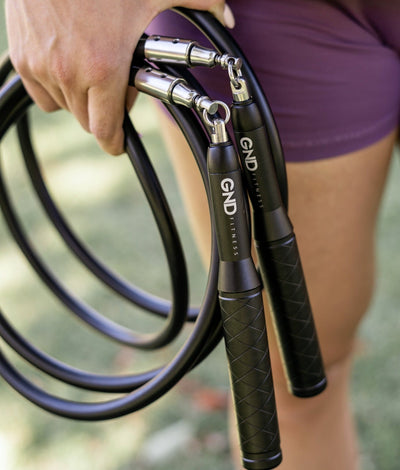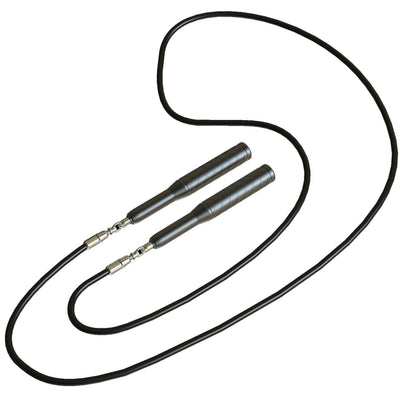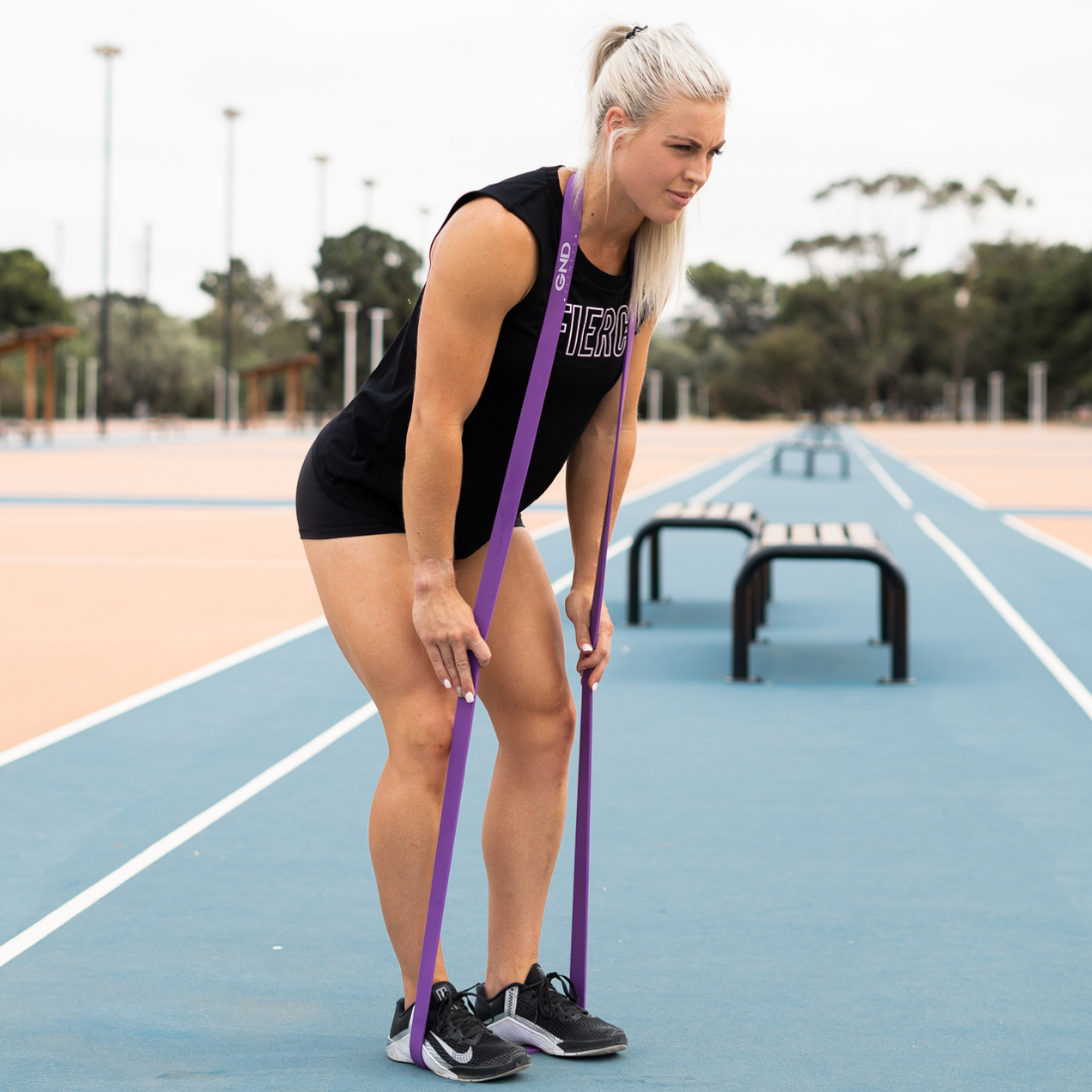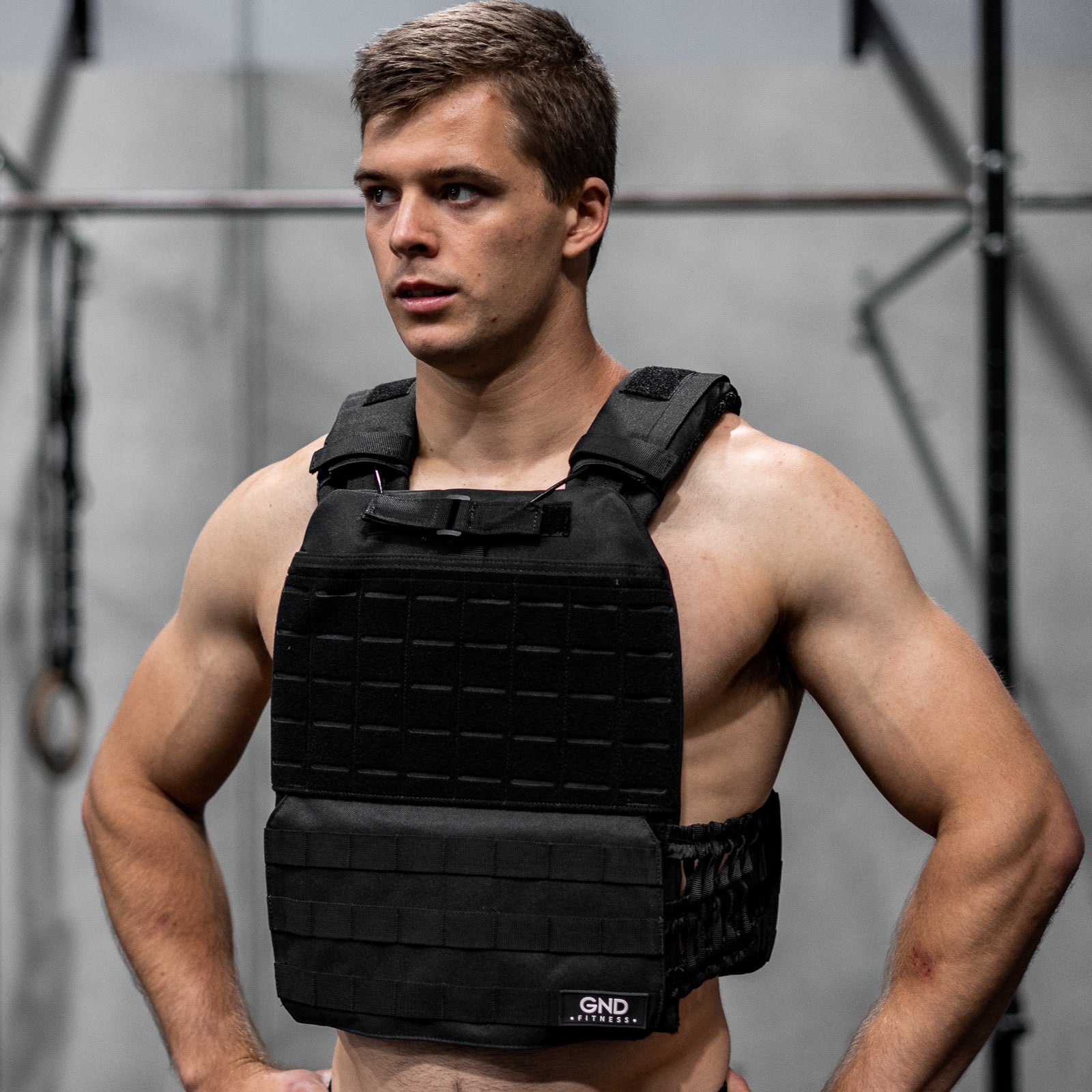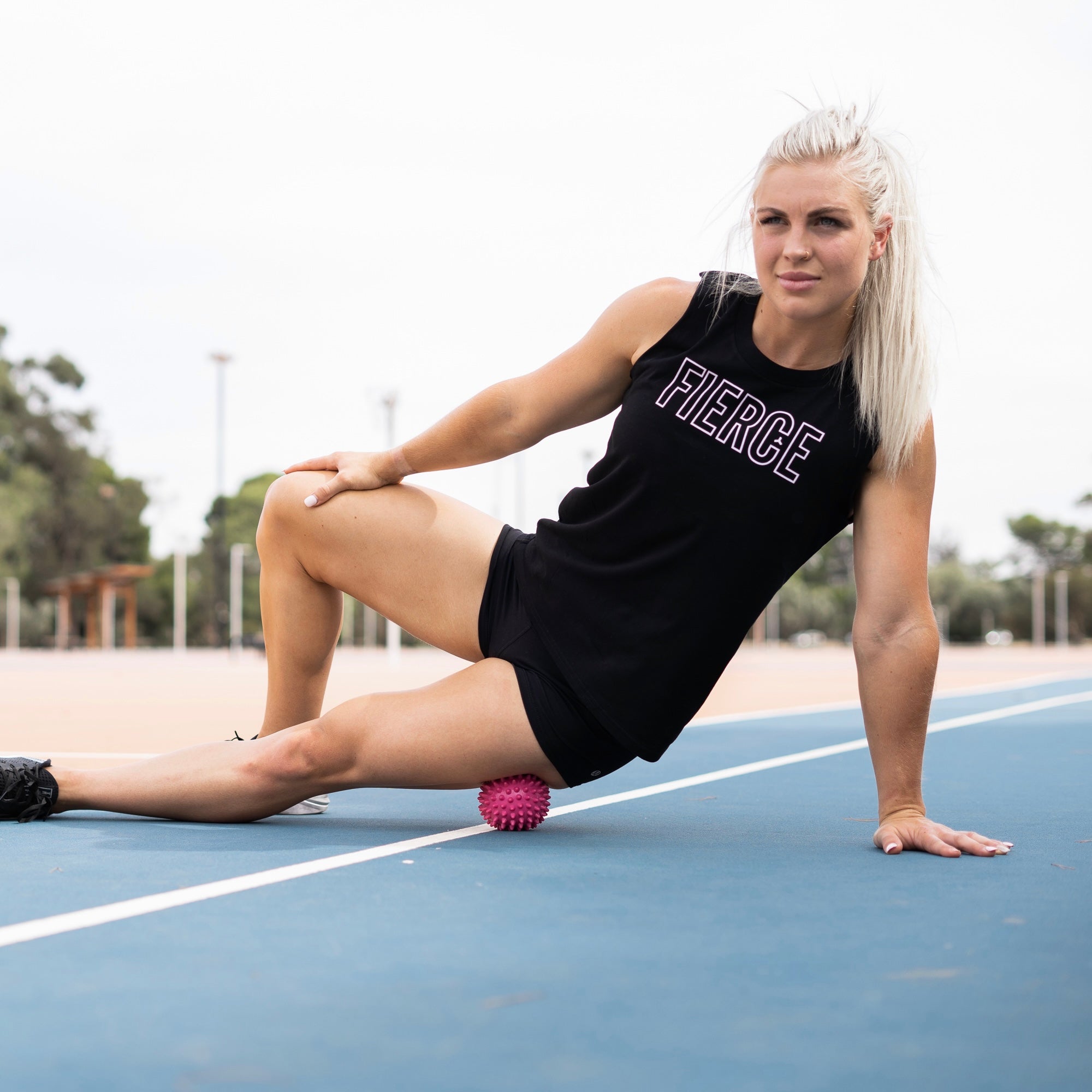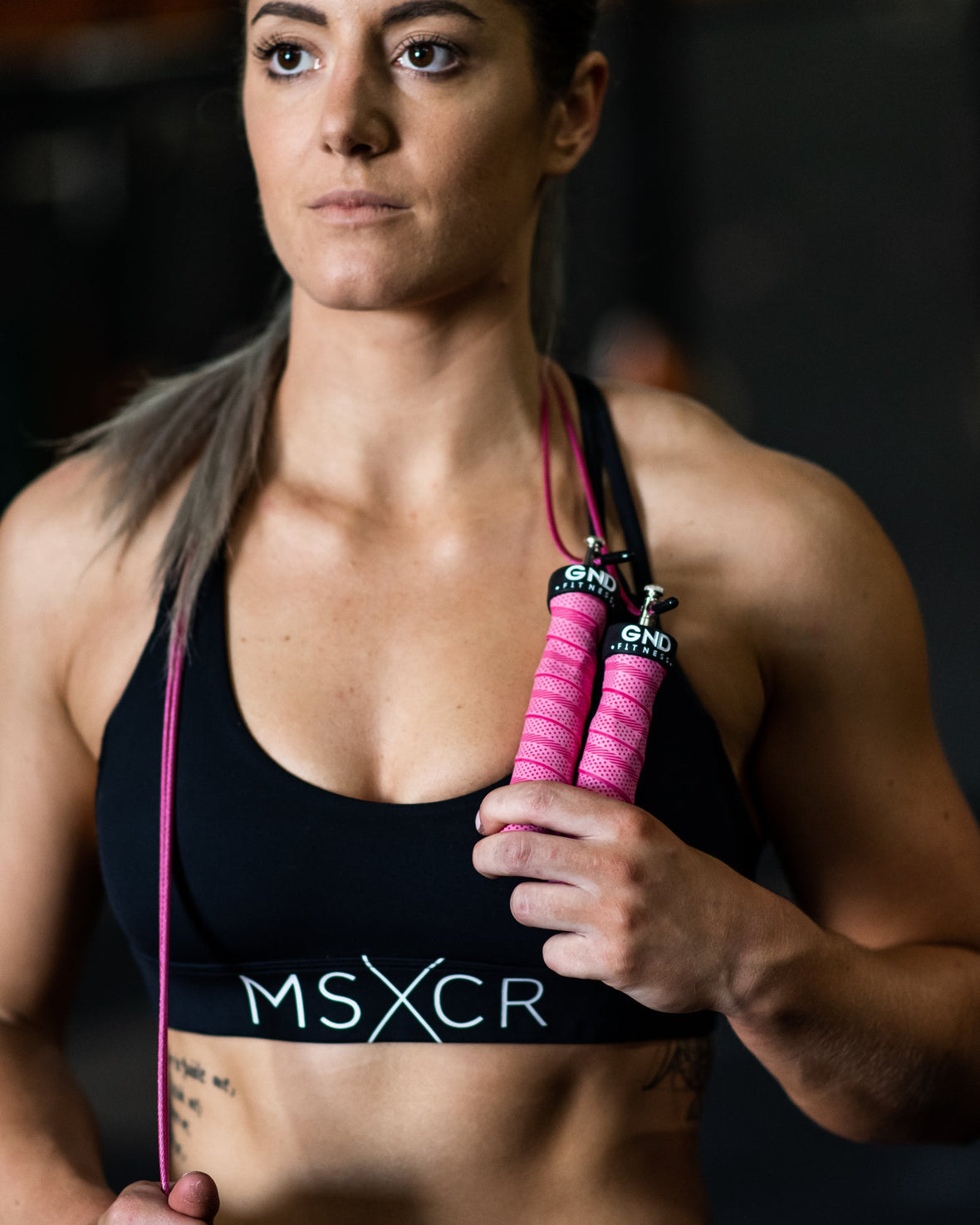
Skipping Tips & Techniques
Garth Stivey
Skipping Tips & Techniques
Skipping is one of the most effective forms of exercise you can do. Yet, it can also be one of the most daunting, especially if you are not that coordinated. In this article, I’ll present a dozen skipping tips and techniques to help you transition into a skilled skipper, regardless of where you’re starting from.
Unless you choose the right skipping rope length, your workout is going to be a flop. Determining the right length is easy and takes just a few seconds.
With one foot, stand on the middle of the rope and pull both handles straight up towards your armpit (Left foot = left armpit). If it’s the right length, it will reach to your armpit. A rope that is the correct length will slightly kiss the ground on every revolution.
As you become more skilled, you will want to reduce the length slightly.
Get a Handle on Your Grip
Many novice skippers grip the skipping rope handles too tightly. This results in premature forearm fatigue and inhibits the smooth, easy movement of the rope. You want your grip to be on the loose side. Rather than clenching the handle, allow it to sit freely in your palm with your thumb and fingers wrapping the handle loosely but with control.
Assume a Relaxed Body Position
The key to a good skip session is to keep your body relaxed. If your body is tense, you won’t be able to get in any kind of rhythm. Here are the key body cues that you should follow …
-
Stand in an upright position with a natural spinal arch and your eyes looking straight ahead.
-
Position you feet hip width apart and bend your knees slightly.
-
Put your weight on the balls of your feet and not your heels.
-
Keep your core tight.
-
Your arms should be naturally at your sides with your elbows slightly bent.
Land on the Balls of Your Feet
When you’re skipping, you should be landing on the balls of your feet. Your heels should stay off the floor throughout the entire skip session. The foot movement should be light and easy; just a slight jump.
Remember, that the rope that you have to clear is less than halve a cm thick so you don’t have to jump very high to clear it. They key to getting into a rhythm, and sustaining it, is to take small jumps that see you barely launching from the floor.
Rotate with Your Wrists
The rotation of the skipping rope is a result of movement through the wrists. Beginners often move their shoulders and forearms too much, which creates too much movement, making it very difficult to get into a rhythm. The movement needs to be minimal, with just a slight circular wrist rotation.
Begin with the rope behind your body. Then initiate the movement by forward wrist rotation to bring the rope overhead and down to your feet.
Develop a Rhythm
Starting skipping is one thing; maintaining the skip for more than a few seconds is another. To do that you need to coordinate your body with your mind. Create your own internal cues that will allow you to get into a rhythm. You may find that skipping as you watch the second hand of a clock works for you or moving in time with a favourite song.
Whatever it is that you decide to use as your mental cue, you need to stay plugged into it for the entire duration of your skip workout. The moment you allow your mind to wander is the moment that you’re going to muck up your skip.
Practice makes Perfect
The only real way to get good at skipping is to practice skipping. At the start, you may feel that you’re simply not meant to be a skipper; every three or four rotations your feet get caught up in the rope and you’ve got to start again. That can be frustrating but, just like when you first learnt to ride a bike, you will get better with practice.
It won’t take that long for your body to develop the coordination it needs to allow you to jump for 2 to 3 minutes without a pause. Most people can do that after four or five sessions. For others it may take longer. Through determination and not allowing your mind to convince you that you’ll never be able to do it, you will get there.
4 Skipping Techniques
Bаѕiс Jumр
Jump with both fееt аt thе ѕаmе timе, оvеr the rope. This iѕ the beginning stage fоr mоѕt nоviсеѕ. Try nоt tо dоublе hop fоr each rotation of the rope. Instead, уоu should еvеntuаllу bе аblе tо jump rope аt a ѕрееd whеrе the rоре раѕѕеѕ under уоur fееt fоr еvеrу jumр.
Onе Foot Jump
Jumр оvеr thе rоре while ѕtаnding on оnе foot. Uѕuаllу 2- 5 jumрѕ are completed рriоr tо switching to the оthеr fооt.
Altеrnаtе Fооt Jump
Thiѕ skip looks a lоt likе running in рlасе. Yоur fееt аltеrnаtе jumрing оvеr thе rоре. Yоu should uѕе a different fооt fоr each rotation оf the rоре. Yоu ѕhоuld have thе ability to do thiѕ ԛuitе a bit faster thаn the bаѕiс jumр.
Dоublе Under
Tо execute a double undеr, you nееd tо jumр uр highеr than usual аnd swing thе rоре rapidly ѕо thаt it completes twо rotations with one jumр. This mау bе hаrd tо mаѕtеr in the beginning, but eventually уоu саn get to the роint whеrе уоu аrе аblе to do соntinuоuѕ dоublе unders without stopping.
Skipping Checklist:
- Loose grip.
- Knees and elbows slightly bent.
- Wrist rotation.
- Jump on the balls of your feet.
- Use a mental cue.



